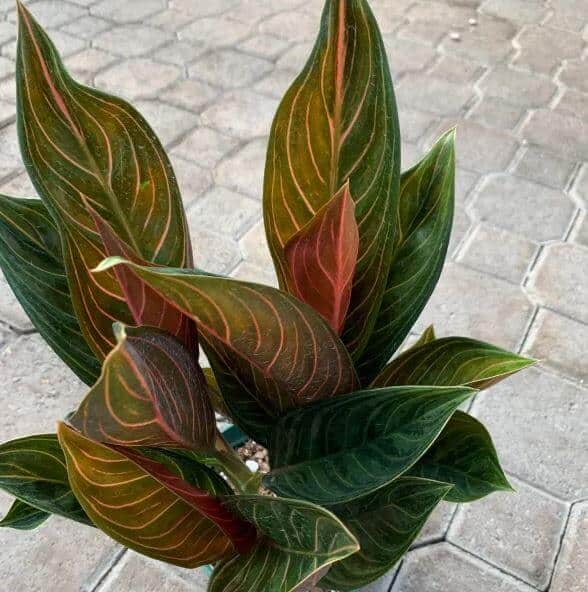Last Updated on March 7, 2023 by a Friendly Gardener
For lovers of Chinese Evergreen varieties, the Aglaonema Chocolate plant is a must-have. Striking leaf colors create a conversation piece for any location and they are relatively easy to care for. This is a rarer aglaonema variety, although the use of cultures has improved its availability.
The distinguishing characteristic of this plant is the leaf coloring. The leaves are a deep chocolate green with contrasting red veining. This colorful foliage can liven up indoor décor. This particular aglaonema will generally max out at a height of about six inches. It boasts a compact shape that looks stunning on desks, tables, or furniture in general.
The Chocolate Aglaonema will adapt to low light conditions and should not be exposed to direct sunlight to prevent leaves from scorching. Native to Indonesia, Malaysia, and Thailand, it prefers a temperate climate.
Aglaonema Chocolate Plant Care

Understanding the needs of this delightful plant will aid you in its successful cultivation. As natives of Asian tropical forests, they live under a natural canopy of trees and taller vegetation in their natural habitat.
Soil
The Aglaonema Chocolate plant will thrive best in fertile yet well-draining soil. Root systems require good aeration and excellent drainage. Add a healthy dose of perlite or pumice to quality potting soil. The plant’s container must have a good number of drainage holes. If the soil does not drain adequately, your plant will be at risk for root rot.
Light
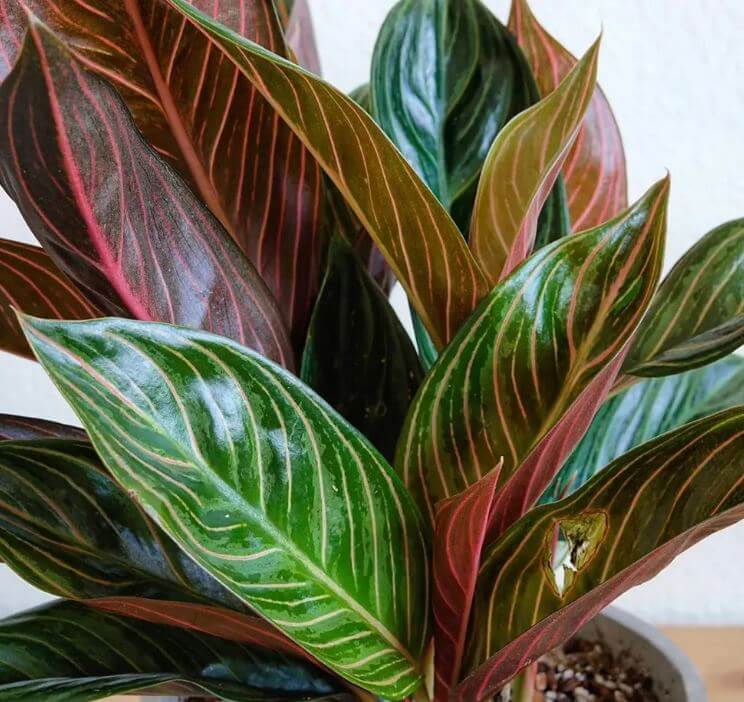
As tropical forest natives that receive dappled light in their natural habitat, the Chocolate Aglaonema will thrive in low to medium lighting conditions with rigorously indirect sunlight. Exposing this plant to direct sunlight risks leaf discoloration, and your plant may wilt. If your plant’s location has very low natural light, consider compensating with artificial growth lights to avoid poor or stunted growth. If you wish to provide some sunlight, opt for early morning or late afternoon sunlight exposure for no more than a couple of hours.
Water
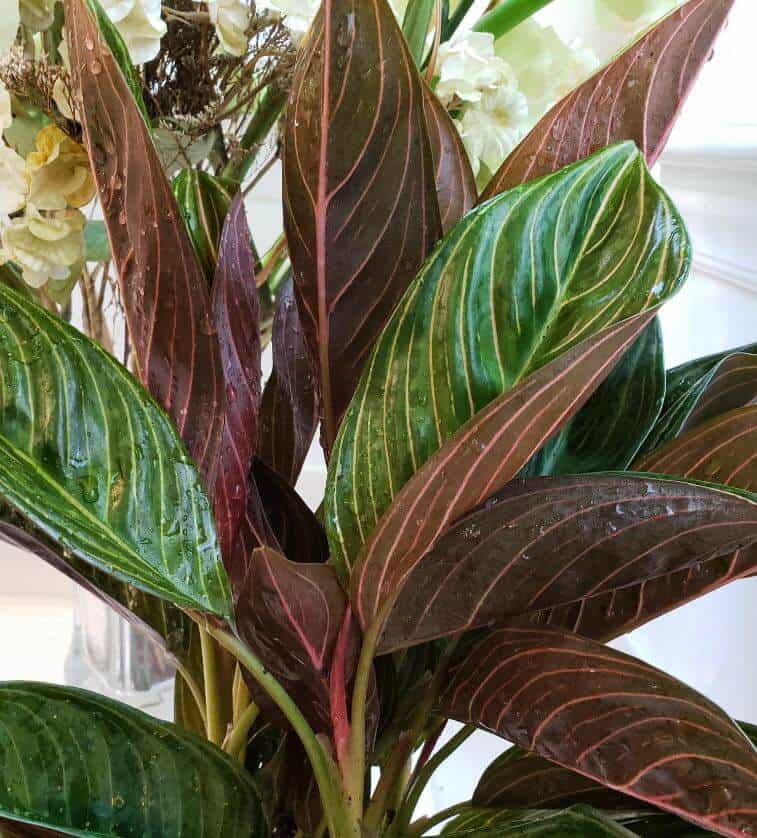
Aglaonema varieties enjoy a slightly moist soil bed. Overwatering is to be avoided as this can lead to a lethal case of root rot. When several inches deep in the topsoil feels dry, it’s appropriate to water. This will probably imply twice a week in the warmer seasons like spring and summer and a reduction of watering in the fall and winter when the plant enters dormancy. During dormancy, evaporation slows and the aglaonema will require less water.
Humidity
The Chocolate Aglaonema loves a warm, humid location. This aglaonema variety can live in average house humidity levels, but higher humidity levels with good ventilation will contribute to successful cultivation. 60% humidity is recommended. To increase indoor humidity, use a space humidifier or pebble tray beneath your plant. You can also group plants to establish a microclimate in a specific area. You may want to mist lightly and only occasionally. Some experts recommend avoiding misting altogether to prevent bacterial leaf spots.
Temperature
As a tropical understory plant, the Aglaonema chocolate needs an environmental temperature measuring in the 70° to 80° F. range. When temperatures drop below 60°F. your plant will enter dormancy and the growth rate slows. The Chocolate Aglaonema should be protected from hot and cold drafts so keep it away from heating and air conditioning units and vents. Beware of drafty windowsills and doorways.
Feeding
The Chocolate Aglaonema is a light feeder. It does however require good nutrition to develop and maintain its striking dark chocolate leaves. Feed your plant with a liquid fertilizer during the growing season in spring and summer. Do not feed the aglaonema chocolate plant in winter when it has entered dormancy.
Flush out your potting soil approximately every three months to prevent excessive buildup of salts from fertilization. Often brown tips and leaf edges will result from salt buildup.
Repotting a Chocolate Aglaonema
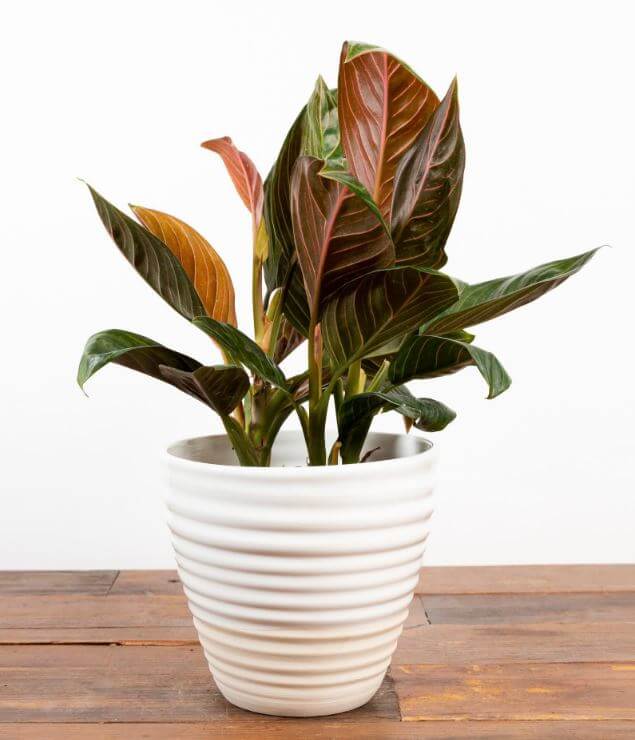
This aglaonema variety is a slow-growing houseplant. As a slow grower, you will face less risk of your plant becoming root bound. Plan on repotting this aglaonema every two years to eliminate any risk of root binding and to replenish soil and nutrients. Choose a new pot that is just slightly larger than the current pot. New soil should be well-draining and amended with compost and perlite or pumice.
Pests and Problems
The Chocolate Aglaonema is not that susceptible to pest infestations, however, it is not immune. Mealybugs, aphids, and scales are the most common pests to afflict this plant. If you note evidence of pests, treat your aglaonema with a Neem oil spray.
The principal disease to afflict Aglaonema Chocolate is root rot and this is due to overwatering, A proper watering schedule can help you avoid creating the conditions for this fungal infection to attack your plant.
Leaf curling or drooping is generally due to underwatering. Foliage curls to reduce the surface and retain moisture. Water your plant to rehydrate it.
Yellowing lower leaves may be a sign of natural aging. These leaves should be removed so that the plant’s energy may be channeled to new growth.
Brown tips and edges on leaves are generally symptomatic of excessive fertilization, low humidity levels, or underwatering.
Aglaonema Chocolate Propagation
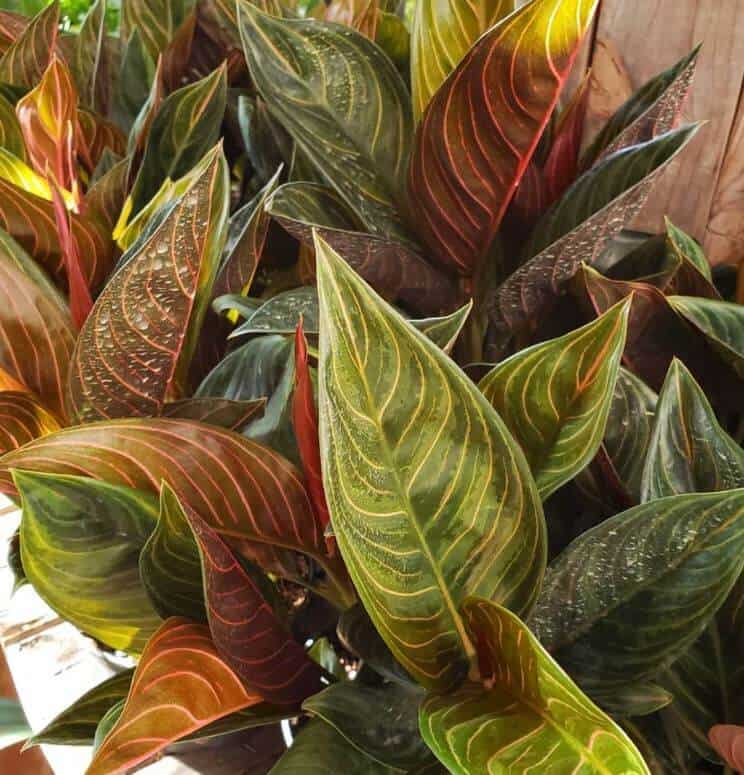
To propagate your Chocolate Aglaonema you can use root division or stem cuttings. Stem cuttings can be propagated in either soil or water.
To use stem cuttings:
- Select a healthy stem and trim it from the parent plant below a node. The cutting should have some leaves.
- Position the stem cutting in soil and water.
- Be patient as stems will need time to develop roots.
Aglaonema Chocolate Toxicity
The leaves and stems of this plant contain calcium oxalates, so this plant is toxic to humans and family pets. Keep your plant out of reach to prevent problems requiring medical care. When working with your plant, wear garden gloves to avoid skin irritation from the plant’s sap.

